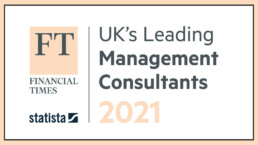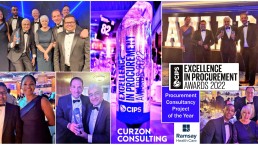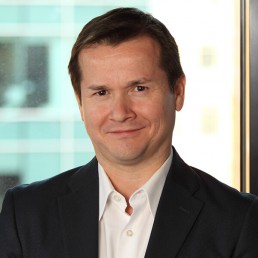Delivering business turnaround
The issue
- The UK business of a global construction materials manufacturer had been losing money for several years due to inefficient operations and declining sales in an industry sector experiencing extremely challenging times.
- A full business review and improvement plan were required to stabilise the business and address the financial performance.
- Significant cost reduction efforts had already been made to offset the declining sales and lower margins, but the business was continuing to lose money.
- Sales lacked the basic tools and capabilities to compete effectively and operations were poorly managed resulting in over-production, an inefficient organisation and poor working practices.
- The leadership team was highly dysfunctional and lacked the capability to define and execute a plan to address the situation.
Solution
- Undertook a full situational analysis of the business operations and identified changes required to reverse the performance trend
- A comprehensive change programme was designed and implemented with the full involvement of the business management team
- Recognising that the current actions were primarily to address the initial objective of eliminating the business losses, a parallel stream of work focused on the market and development of the future strategy for the business
- This dovetailed with the reorganisation of the commercial functions and outlined the business’s future journey to go beyond a break-even situation and achieve acceptable returns

The results
- The programme had a significant impact on the business across all areas of the value chain and delivered a sustainable bottom-line improvement of over £5m p.a in 12 months.
- In addition to the delivered cost optimisation actions the re-focusing and capability development work with the sales team secured a contract renewal with three principal customers and the acquisition of a new major account and stemmed the loss of any further business.
- The new ways of working that focus on using sound management information to run the business and to action issues have taken root across the organisation. Decision making improved and continuous improvement is becoming established.
- The Group Executive sees the step change in performance that was achieved in the timeframe as the most successful intervention of its kind across the portfolio in recent years.
An award-winning team











CONTACT US TO FIND OUT HOW WE CAN HELP
Applying lean principles to a deliver a step change in performance in a construction environment
The issue
- Over a year behind plan due to technical difficulties and the inability to establish an effective delivery model
- Significant efforts were made to find a workable engineering solution but continuing to fail in meeting planned delivery cycle times
- Accruing significant non-recoverable costs on extending leases of expensive marine engineering plant
- Accepted reality that most delays were either due to weather or one-off events and therefore non-addressable
- Reliant on experienced agents, managers and foremen to manage communication without the need for much structure or formality
- The aim was to achieve a repeatable 14-day ‘production’ cycle, from a starting point of 19 days as the demonstrated best achievement
Solution
Working with the project team to identify and implement:
- An optimal production process with defined task times against which the project could plan, execute and measure performance
- Introduction of cross-functional short-range planning discipline to improve visibility and reduce the instances of unplanned stoppages through poor communication and lack of coordination
- Strengthening the cascade communications to the front-line teams to ensure the right plan was being executed
- Prioritisation of the process improvement pipeline to accelerate the implementation of the highest impact solutions
- Establishing adherence to a standard process and course-correcting back to the agreed sequence if unplanned events caused the deviation
- Previously each cycle had effectively been ‘bespoke’
- Using close monitoring to highlight avoidable downtime and to identify operational fixes, e.g deck layout standardisation

The results
-
Cycle time was compressed to less than the on-target 14-day sequence on a sustained basis, and as low as 10 days, with associated cost savings of ~£0.5m per cycle.
Having the Curzon team ‘embedded’ within the project proved effective in understanding the complexities and challenges of the operating environment. Pragmatic and tailored interventions and a ‘test and learn’ approach encouraged adoption and ownership.
An award-winning team











CONTACT US TO FIND OUT HOW WE CAN HELP
Why renewable energy is fuelling investor interest
As an asset class, renewable energy has matured dramatically over the past two decades. It has gone from being seen as an alternative culture to having huge investment potential. At the same time, traditional investment norms are changing and not just because of the evolving sustainability mega-trend. In recent years, investment managers have increased their allocations to the broader real assets sector with growing numbers classifying infrastructure and real estate as “real assets”.
Solar power does not pollute the air with greenhouse gases and is noise-free to be used for residential purposes. Solar opportunities are available at various scales, i.e. for households and large business ventures providing power to the grid. Solar panels are the fastest-growing renewable energy option, thanks to falling costs and increasing investment. Their easy installation and “low emissions” are environmentally friendly.
Wind turbine power will be an increasingly compelling longer-term investment due to increasing urbanisation and population growth, leading to higher electricity demand. Technological progress with relative cost advantages for renewable energies and an improved regulatory environment (social and political support) motivates businesses to manufacture wind turbines.
Get in touch with Andrew to discuss
CONTACT US TO FIND OUT HOW WE CAN HELP
Nothing found.
Sign up to our insights
The Future of Work in Financial Services
The last 15 months had seismic impacts on workforces and ways of working
Banks and insurers weren’t prepared for the pandemic – within days nearly every employee was working from home, all of the time. The initial response was crisis-mode transferral of existing activities, processes and tools to remote – with minimal adaptation.
Most organisations surprised themselves at how quickly this was achieved and asked why they couldn’t make change happen as fast outside of a crisis.
Rises in workforce productivity were reported (less evidenced), but this was partly driven by fear of job loss.
Homeworking conditions varied enormously, with many people dealing with cramped, noisy environments, unreliable internet connectivity, and competing childcare and work demands
Protracted home-working suited some but caused a widespread decline in mental and physical wellbeing for others*, particularly in larger households:
- 46% taking less exercise and 39% developing musculoskeletal problems
- 59% finding it harder to switch off from work and 37% reporting disturbed sleep
- 67% feeling less connected to or isolated from colleagues
- 41% of those living in households with 3+ people think working from home is worse for their health and wellbeing, vs 29% of those living on their own and 24% of those living with just their partner
Business leaders had to respond to a wave of 'here & now' imperatives
How to:
- Immediately ensure operational resilience and prioritise access for those who most needed service
- Adapt and mobilise rapidly to deliver Government-backed support scheme (BBLS, CBILS)
- Avoid customer resentment or loss as a consequence of exceptional service constraints – e.g. motor and health insurers compensating policyholders for reduced need to claim or ability to fulfil claims
- Best minimised disruption and restore service quality for all partners and customers
- Accelerate process and service digitisation to enable all this, e.g. increased chatbot use to manage contact demand
- Provision to manage significant financial risk, e.g. bad loans for banks and increased claims volumes for Life insurers
- Minimise furlough and redundancies and keep colleague morale and motivation high
- Ensure a safe, confident return to the workplace during those periods when permitted/required to
Expansive, strategic initiatives – like progress on sustainability, operating model and core technology change – were largely relegated down the agenda
Today’s focus is on transitioning to new ways of working which will best advantage organisations and colleagues after restrictions end
- The Government requirement to work from home whenever possible lifts on July 19th
- Though uncertainty continues with some senior scientific advisers urging continued working from home over the summer
- Return to the workplace is underway within Financial Services albeit under varying conditions, speeds and guidance
- Lots has been done on scenarios and plans for what the new ways of working will look like, and how they will be better…
But how ready are banks and insurers to execute their plans and take full advantage of the many opportunities the transition offers?
Visions of the Future of Work vary, and the best solution to many implementation complexities is not yet known
Simplistically, strategies divide between three broad options
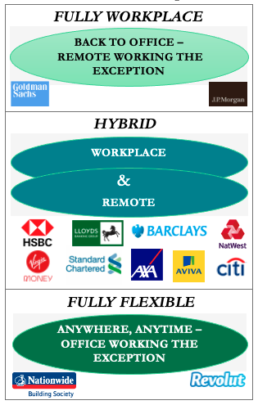
But one size won’t fit all
There are multiple work ‘personae’ with different required and desired ways of working:
- e.g. in the wealth management division of a bank, traders may be encouraged back to the office full time…
- where, Ops and Technology colleagues shift to a 1:3:1 week [1 day in the office, 3 at home, 1 flexible]
- while private banking account managers go to fully flexible
Many questions still need working through before the optimised hybrid model is found such as:
- What will the office be used for on return – which tasks and activities need to be conducted there and what changes in office design/functionality will best support those?
- What and how should policies flex to deal with exceptions, e.g. for people with lower comfort levels about returning to office-based or more cautious views of ongoing Covid risks?
- Where and how should front/middle/back-office processes and controls differ between the office and home?
- Where and why should this prompt a reshuffle of roles, interfaces, activities to maximise performance?
- Do certain roles no longer need to be attached to a site/location? E.g. could a UK job be done 100% from home in France?
- How to ensure similarity between home and office experience where it matters to avoid some colleagues feeling disconnected, and to bolster inclusivity?
- To what extent will savings from reduced office space outweigh costs of standardising/upgrading home working equipment, furniture, and technology?
The challenge is now to successfully translate the vision into the new operating and cultural reality… and deliver maximum benefit from it
The Future of Work challenge facing organisations now is how to actually ‘make it happen’
Moving to action is the hard part, and in our view, the effort needs two strongly coordinated legs:
- Piloting the practical changes needed to establish and embed target new ways of working – testing/learning and refining at pace to best effect across the entire business, attuned to the needs of different work personae
- Designing and delivering deeper change that goes beyond just re-configuring office space – to create maximum value by converting the breadth and depth of opportunities opened up by the FoW, so…
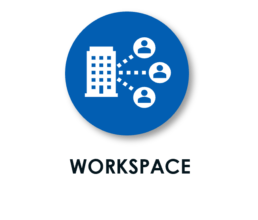
- Optimise and flex office access and space in synch with hybrid working needs
- Perfect the work-at-home equipped-ness and experience
- Convert cost-savings from real estate footprint and usage reduction

- Organise across functions and silos for hybrid working effectiveness
- Link WoW changes to delivery of CN0 & cost optimisation goals
- Raise employee engagement as a purpose-based organisation

- Improve management, coaching, motivational techniques and controls to bridge in/out office split
- Skills & behaviours ‘upgrade’ for higher performance and positive culture change
- Enrich diversity and recruit the best talent from a wider geography

- Re-think routine activities for maximum efficiency
- Introduce smarter working processes to boost productivity
- Drive those pandemic customer behaviours (like increased digital payments) which boost productivity and enhance CX

- Adopt best collaboration tools and AI/automation technology to improve work quality, pace, output
- Clear out under-utilised or no longer fit for purpose office collaboration / workflow tools
In delivering holistic change there is a golden opportunity to redefine the employee value proposition and enhance culture
Holistic change approach to the Future of Work
Designing to most compelling EVP for the future


The human and commercial benefits of getting this right are BIG
Banking and insurance have amongst the highest remote working potential of any sector, with around three-quarters of time spent on activities that can be conducted remotely, without the loss of productivity*
Indicate scale benefits of transitioning to 50% remote working are £10M annual savings per 1,000 employees

There are important human capital and reputational /social responsibility benefits to derive from improved employee experience and accelerated reduction in the organisation’s carbon footprint***
* Source McKinsey / What’s Next for Remote Working
** Source Global Workplace Analytics, Amazon, SHRM, Deloitte – average annual savings include the cost of office rent, electricity, water, insurance supplies. Savings based on full-time employees with compatible jobs telecommuting 20 hrs/wk. Assumes 2,000 hour work year and £70/hr labour rate
*** Source Carbon Trust / Homeworking
So… the questions we think you need to be able to answer are…
Strategy
Does your FoW vision and ambition reach far enough?
Is your FoW strategy holistic and clear on what benefits the new ways of working should deliver, in terms of
- human capital
- culture change
- productivity
- operational efficiency
- customer experience
- cost optimisation
- carbon reduction
How robust is the supporting business case and rationale?
Change Design
Do change designs have the necessary sensitivity and granularity at policy, process, controls and performance management levels? Do they have
- defined rules and variability on when in-person presence is required by specific roles, activity mixes and situations
- mitigations of risk of accentuating inequalities and creating new psychological or emotional stresses amongst employees
Test – Learn – Optimise
What will it take to pilot, refine and embed the transition effort successfully and at pace?
Enablement
What needs to be achieved to ensure the organisation and people are ready to adopt the new ways of working?
Have you identified/selected the optimal system, technology and data solutions to enable the hybrid working model?
Benefit Capture
To what degree can you be confident you have the right implementation plans, measures and capabilities to realise the target model and benefits?
We would welcome a discussion to understand where you are in moving from visioning to delivering FoW and which questions matter most to you, and to explore where Curzon’s capabilities may be relevant to your needs
CONTACT US TO FIND OUT HOW WE CAN HELP
Future of Work insights
Sign up to our insights
Abhishek Roy

Consultant
44 (0)7459 047 273
Abhishek is a Specialist Physician turned Management Consultant, with over 7 years of work experience in the public healthcare sector in India. He has successfully led large teams across geographies amidst highly complex and challenging environments of COVID and paediatric epidemic crises.
He holds a Bachelor of Medicine and Surgery (MBBS) and a Doctor of Medicine (MD) in Clinical Biochemistry from prestigious medical schools in India. He also holds an MBA from Saïd Business School, University of Oxford, with concentrations in Strategy, Technology, and Entrepreneurship.
In addition to his medical work, he has also juggled being an Entrepreneur and Strategy Consultant to health-tech start-ups in an accelerator programme. Combining his previous experience in healthcare and his business acumen, his vision is to help solve the most complex problems plaguing the healthcare industry across the world.
CONTACT US TO FIND OUT HOW WE CAN HELP
Business performance turnaround for a multi-country division of a global building products group
The issue
- LATAM division of a €3bn global construction product manufacturing & distribution group
- Country-based business units in 14 geographies from Mexico to Chile with 3,500 staff generating revenues of €400m
- A sustained period of under-performance with operating margins at sub-3% making it the worst-performing division in the Group
- Divisional layer not adding any value with local businesses being left to operate independently, some with more success than others
- An extended analytical diagnostic by a global consulting firm had established the scale of the problem, but no credible and accepted plan to address the issues had emerged
- The need was for pragmatic help to make change happen with the full buy-in of local management
Solution
Plan and mobilise stage
- Confirm the scale of the improvement opportunity
- Agree targets and align with budgets to have one set of numbers
- Create a plan and a governance model to balance top-down coordination with full engagement from the business units
Delivery stage
- Initial focus on four of the largest markets where impact potential was greatest
- Reduction in margin leakage through pricing optimisation, product mix & discount control
- Introduction of operational excellence basics across manufacturing facilities
- Inventory optimisation, including clean-up of obsolete and slow-movers
- Reduction of corporate overhead layer and leverage of shared service centre to reduce in-country costs
- Capability development of management and teams across all disciplines

The results
- The Division was transformed from worst to best performer in the Group within 12 months
- Operating margin tripled and accrued benefits delivered were 45% above the programme target
- Working capital was reduced by €25m
- The change management effort involved over 1,000 staff across all functions and businesses
- Awarded ‘Best International Project’ by the UK Management Consultancies Association
- Curzon entered a risk-reward commercial arrangement on benefits delivered
We wanted a step change in performance, done in a way that would build capability to make it sustainable… the results speak for themselves. – Divisional CEO
An award-winning team











CONTACT US TO FIND OUT HOW WE CAN HELP
Congratulations to Our 2021 MCA Awards finalists
We are delighted to announce that Curzon Consulting are finalists in 2 categories of the Management Consulting Awards 2021, representing the very best of our consulting business.
Established by the Management Consultancies Association, the #MCAAwards demonstrate the transformational work the sector has undertaken during the last challenging twelve months.
2021 marks the seventh consecutive year that Curzon Consulting has been finalists at the prestigious awards.
Commercial Excellence
Curzon with AIG – ‘Back to Life’ – Fast-Tracking to Leadership in Customer & Profit Retention
Read More
After a period of impressive top-line growth, AIG Life’s leadership now concentrated on driving for profitability on a US GAAP basis. Working with Curzon to isolate what could best deliver profit uplift, we zoomed in on a stubbornly un-moving customer persistency rate and recognised that every 1% point of lapse averted would yield significant and multiplicative profit gains.
Curzon was engaged on an ambitious programme to rapidly get control of lapse and release commercial benefit, and to build the capability to achieve best practice retention management. This was an enormous challenge given the starting point: no set persistency strategy, an absence of key lapse analytics, retention not owned or resourced in the organisation, and a lack of lapse prevention and turnaround processes.
Over 11 months through 2019, we took a pragmatic, agile, and ‘together’ approach to accelerate to retention excellence, securing the organisation’s buy-in to what it would take to get there, and quickly demonstrating the commercial, operational and customer benefits of joined-up retention management. Curzon enabled the new cross-functional working essential for success, and gave the business the structures and confidence to operate highly effective preventative and save processes – internally and leveraging external partners.
Among the prime watershed moments were revealing how:
- a shift in distribution mix from advised face-to-face to telesales had created a hitherto unseen problem of drop-out inside first 3 months
- customer communications from welcome onwards needed to explain clearly the personal value of life insurance, and how holding it ensures financial provision for those you love
- rather than automatically cancelling customers on request, customer service had a responsibility to engage them before they make a potentially uninformed decision
When the business took the reins 3 months after improvements were implemented, lapse rate had been reduced to the best practice % mark on a run-rate basis and incremental revenue and profit benefit unlock was exceeding our original target. This translated annualised into 5-figure policy saves and a cumulative £multi-million gain in Pre-Tax Operating Income by 2023. The business had taken ownership of a new retention management function, with a new Lapse MI suite providing the predictive insights to continually optimise retention. Beyond achieving the agreed objectives, the work also led to complementary projects including work to minimise drop-out in the Bank partnership sales channel.
Commenting on the success, AIG Life CFO Donald MacLean said:
“Curzon helped us obtain the confidence and operational ‘can-do’ to get control of lapse sooner than we could have expected, and then to push on to best practice performance.
As always, their skill was in balancing pace of change and the results imperative with the need to take the organisation with them on the journey. A key achievement was building the necessary collaboration between the many functions that needed to act together to manage retention in a joined-up way.
The result was a tangible and ongoing commercial win, and a vital new balance struck between sales and retention for business profitability and sustainability”
People
Curzon with Highways England – ‘Project Performance Accelerator – Enhancing delivery capabilities through innovative approaches and working relationships to achieve HE delivery goals
Read More
Project Performance Accelerator (PPA) was designed to develop and implement a delivery mechanism for Highways England’s (HE) overarching Business Transformation Programme, addressing inconsistent levels of capability throughout HE’s Project Management community and developing highly skilled project delivery teams. Overall, HE’s three main Major Project programmes account for 80 projects worth more than £23bn, each being delivered by a supply chain or contractor led by a Project Management team.
PPA’s leader Steph Illingworth engaged Curzon to interpret and structure her Vision of the PPA Programme into clear deliverables, shaping the fundamentals. There was consensus on cultural flaws and ineffective ways of working. Revealing a deeply siloed organisation with multiple departments or technical areas that lacked collaboration or a holistic view of the primary objectives and deliverables: projects were not executed on time and within budget, nor maximising benefits and social value. Also, capability development and training programmes were too theoretical and onerous, focusing on processes and systems rather than people, impacting the overall project success.
Focusing on performance management, capability development, project control capability and enhancing commercial acumen, the PPA Programme included two outputs as the medium for change: An Immersive Learning Experience and Digital Project Management Guidebook.
The Immersive Learning experience was designed to disrupt the way programmes are delivered. The Digital Project Management Guidebook contained PM content selected through independent reviews and capability assessments. Both outputs were crafted around the project lifecycle of typical HE infrastructure projects, set to be delivered in-person over a period of 18 months. Cohorts were selected to receive a tailored experience, improve project team maturity, and provide a solid foundation for capability uplift to achieve clear learning outcomes and benefits.
At the heart of the PPA philosophy was to enable project teams to grow, enhancing ‘ways of working’ whilst bolstering project performance. These included a “working better together model”; a fundamental shift in the way individuals interact and take ownership of overlapping project aspects and problem-solving techniques. This, along with the Immersive Learning, reinforced the Programme’s success, shifting the focus from systems and processes to people.
The pandemic introduced significant challenges, necessitating the immediate conversion of the Programme from in-person workshops to a virtual setting. The team adapted structures and materials, incorporating a variety of software suites to enhance the learner experience. Frequent interaction and close collaboration with the internal and senior stakeholders were critical to maintaining speed and delivery, adopting a fail-fast, fix fast approach to syllabus creation
The consulting team could interpret the client’s vision into a clear pathway, support and enhance the design to become one of the most successful transformation project delivered in HE.
The Digital Project Management Guidebook launched in August 2020 via four interactive webinars to c.300 employees have now received over 1,000 unique viewers. A modified deployment strategy was adopted in light of the pandemic, redesigned as a remote Immersive Learning Experience. However, over 5,049 hours of remote learning have been received by 100 staff through 9 project teams, enhancing teams’ capability with a combined portfolio value greater than £3.3bn.
Congratulations to all of the other finalists.

CONTACT US TO FIND OUT HOW WE CAN HELP
Curzon Consulting partner is Category Judge for 2021 Soldiering On Awards
2021 Soldiering On Awards
Curzon Consulting Partner, Douglas Badham, is proud to again be a Category Judge for the 2021 Soldiering On Awards.
The Soldiering On Awards highlights the outstanding achievements of current and former service men and women, their families and those who support the Armed Forces Community. Now in their eleventh year, the Awards recognise inspirational people for achievements in education, healthcare, communities, diversity and inclusion, and business.
Douglas said:
“This is my second year of judging and I am an ardent supporter of the Awards – for the past eleven years these awards have shone a light on inspirational stories of immense challenges overcome, and stunning personal and business achievements”
Despite the challenges of a pandemic, the Awards have received a record number of nominations.
Lt. Col. Ren Kapur MBE, Founder and CEO of X-Forces Enterprise CIC and Co-chair of the Soldiering On Awards said:
“In what has been another record-breaking year for the number of nominations received, my thanks go to our category judges for the diligence and dedication they have applied to this important step on the path to decide who will be the 2021 SOA Finalists.”
The Finalists will be announced during Armed Forces Week in June.
For more information
About the author
CONTACT US TO FIND OUT HOW WE CAN HELP
Building capabilities for customer centric decision-making using time to value
In our latest blog post relating to Intelligent CX, Curzon Analyst Milla Bradstock explores how to build capabilities for customer centric decision-making using Time to Value.
Time to Value, as a metric, initially rose to fame among software companies and its insights now drive improvements in a range of business contexts. In a customer context, it is described as the length of time between a customer purchasing a product or service and seeing the value of that action. Yet to untap the metric’s full potential, businesses must take a longer-term view of its application that goes beyond resolving customers’ immediate needs.
As T2V requires organisations to understand the value of their product or service from a customer’s perspective, it entrenches customer-centricity into the way businesses think about their services. At a time of rapidly shifting customer priorities, organisations that take this approach will be well placed to remain aligned to the needs of their customers.
Measuring Time to Customer Value
Tracking T2V builds a picture of your present customer journey, which will inform solutions to better fulfil customer needs. However, you can only track T2V if you know what ‘value’ is in the eyes of your customer. The definition of value will, of course, differ amongst your customers, but we can start to break down this metric into two sub metrics:
-
Time to Basic Value – The time it takes for a customer to see the minimum amount of value from your product or service. Delivering on this metric doesn’t lead to customer loyalty necessarily, but will increase conversion.
-
Time to Exceeded Value – The time it takes for a customer to see enough value to exceed their expectations over a longer period of time. Delivering on this metric reduces churn, builds loyalty and increases customer lifetime value.
For example: A travel app with an easy to use interface and intuitive search results will deliver on the Time to Basic Value metric. However, its Exceeded Value will be realised only when it helps a customer have a good holiday i.e. booking a place to stay using the platform.
T2V helps businesses identify obstacles to customer satisfaction, which inform solutions for long-term value creation in the eyes of their customer. For SaaS businesses, onboarding is essential to their customers seeing value from their purchase, which creates the challenge of motivating customers to complete the process.
Focusing on accelerating T2V at this point in the customer journey can therefore decrease customer churn and improve satisfaction. Automated onboarding can be an effective tool, delivering frictionless setup and easy deployment through product tours, in-app messages and onboarding checklists. In tune with customer demands for instant service and ultimate convenience, this tool enables customers to seamlessly see the value of their purchase for themselves.
Implications for organisations
- Move the narrative from Customer Needs to Customer Value
- Focus on Customer Engagement beyond the initial purchase
- Measure and monitor customer engagement throughout the Customer Lifecycle
- And, of course, ensure the engagement delights the customer every time
How we can help
T2V is just one of the tools that we employ to help our clients improve customer value. Businesses that invest now in strengthening their capabilities for meaningful customer engagement will build the resilience necessary for long-term success.
Get in touch to explore how we can help your organisation create lasting value for your customers.

Rachna Trehan leads Curzon Consulting’s Intelligent CX practice. Connect with Rachna on LinkedIn or contact her to discuss how this could apply to your organisation.
Other members of the Intelligent CX team
CONTACT US TO FIND OUT HOW WE CAN HELP
UK’s Leading Management Consultants 2021
Ranked in the Top 20 of the UK’s consulting firms, we are delighted to have been recognised for the third consecutive year as one of the ‘UK’s Leading Management Consultants 2021’ by the Financial Times.
Recommended in seven categories compiled with data company Statista, the annual rating is based on endorsements by clients and peers and demonstrates our steady consistent year on year sector & service line growth.
Consulting companies are awarded Bronze (recommended), Silver (frequently recommended) or Gold (very frequently recommended).
Sectoral expertise
- Construction & Infrastructure – Silver
- Financial Services – Bronze
- Healthcare – Bronze
- Public & Social Sector – Bronze
Consulting services
- Digital Transformation – Bronze
- Operations & Supply Chain – Bronze
- Strategy – Silver
Managing Partner Andrew Morgan said
We are thrilled to see the continued progression of the firm, competing alongside some major consulting brands. I am really proud of the team and this reinforces their dedication to deliver tangible results for our clients in a range of markets through strategic, operational and transformational delivery.
